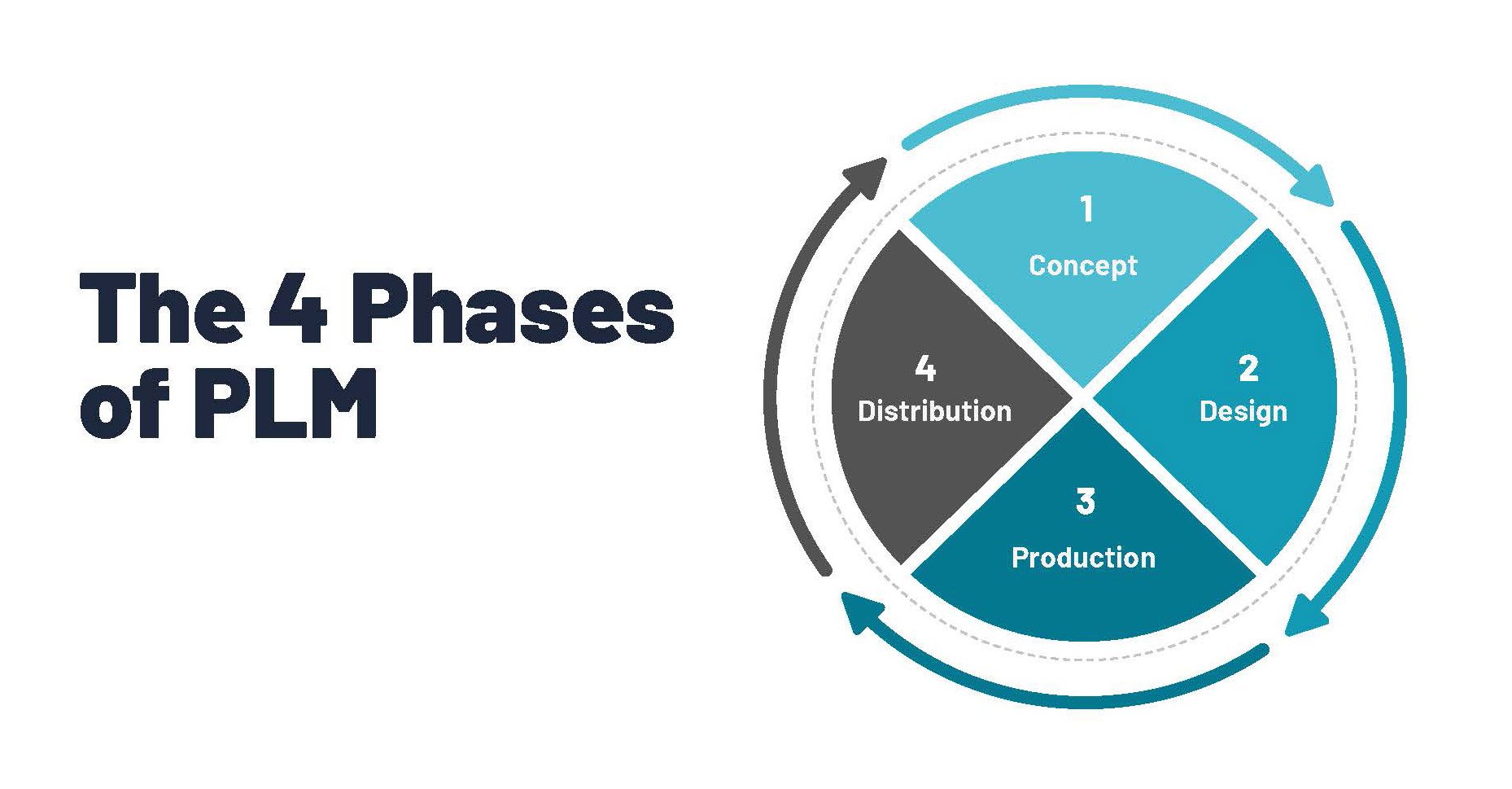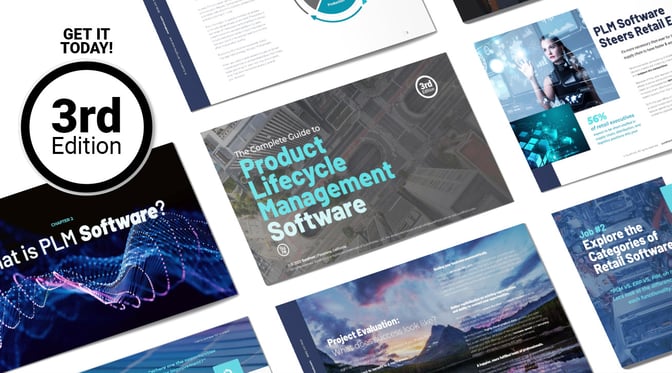Share this
What is Product Lifecycle Management?
by Surefront on Mar 26, 2024 9:00:34 AM
Home > Blog > What is Product Lifecycle Management?
Table of Contents
- The phases of the product life cycle
- Common PLM problems
- An example of communication breakdown
- The need for a PLM solution
- Three main elements of focus in PLM
Product lifecycle management (PLM) is the collaborative process of taking a product from creative inception and development through phase-out. It can be applied to any type of product, from consumer goods to industrial machinery. The end goal of product lifecycle management is optimizing the product development process.
The phases of the product life cycle
The broader stages of the product life cycle include introduction, growth, maturity, and decline. But, as we stated earlier, product lifecycle management is all about optimizing product development. This is because the early stages of the product life cycle are a complex collaborative and logistical process. We can break these early stages into the four phases depicted below:

Here’s a quick breakdown of what happens during each phase:
- Concept. The concept phase marks the inception of an idea for a new product. It involves brainstorming, market research, and preliminary analysis to determine the viability and potential of the product idea.
- Design. In the design phase, the conceptualized idea is translated into detailed specifications and plans. This involves creating prototypes, blueprints, and mock-ups to visualize and refine the product's features, functionality, and aesthetics.
- Production. In the production phase, the designed product is manufactured at scale. It involves setting up manufacturing processes, sourcing materials, and optimizing production efficiency while maintaining quality standards.
- Distribution. Distribution involves getting the finished product into the hands of customers. This phase focuses on logistics, warehousing, transportation, and channel management to ensure efficient and timely delivery to the target market.
In each of these phases, communications and product specifications are being passed between numerous groups. Some of these groups are internal to the organization and some are not. The constant movement of data between external and internal collaborators in the product development process creates a lot of issues.
 Common PLM problems
Common PLM problems
A whopping 90% of PLM issues are caused by mistakes that happen when product information is transferred both internally and externally. Data transfer mistakes can be small and large, but, no matter the size, the impact can be catastrophic.
The culprit of most data errors is outdated product collaboration tools. Many businesses are still passing crucial product information around in PDFs and spreadsheets over email. These outdated tools simply don’t have the capabilities to help businesses keep their data organized.

An example of communication breakdown
Let’s look at how communication issues arise in the product lifecycle management process. Imagine a scenario involving a collaboration between a clothing retailer and an external design agency:
- Retailer: Provides the design agency with detailed specifications for a new line of dresses.
- Design agency: Creates design concepts based on these specifications and sends one back to the retailer for review. Because they have six or seven PDFs storing various iterations of their concepts, they accidentally send an outdated version.
- Retailer: Approves outdated design concept and proceeds to create prototypes and samples based on incorrect specifications.
As production begins, the retailer realizes the discrepancy between the approved design concept and the actual specifications. This leads to delays in production, increased costs due to rework, and potential dissatisfaction among customers if the final product doesn't meet their expectations.
The need for a PLM solution
This kind of communication breakdown is a common story in product development. It highlights the need for a collaboration platform.
If the manufacturer and design agency had been collaborating on Surefront’s unified platform, for example, it would have been almost impossible to work from an outdated design concept. This is because Surefront stores all product data on a centralized cloud system that both internal and external teams can access.
Businesses that eliminate reliance on outdated tools will have a much easier time keeping stakeholders on the same page.
Three main elements
of focus in PLM
These elements of focus need to be addressed by businesses that want to optimize their PLM process.
- Production costs. Managing your product lifecycle thoughtfully helps to identify and prevent inefficiencies in the production process. Eliminating these inefficiencies adds up to huge cost savings over time.
- Product quality. Identifying and correcting any issues with products during the design stage stops them from becoming bigger problems down the line.
- Time to market. Improving collaboration and communication processes can significantly cut down the time it takes to bring a new product to market.
Mastering the project management lifecycle will almost always improve each of the above-mentioned elements. If, for example, all product collaboration takes place on a unified platform like Surefront, communication errors are eliminated, quality issues are easier to detect and address, and efficiency skyrockets.
Key takeaways
Product lifecycle management is a complex process of collaboration and communication between internal and external teams. Because of the complexity of this process, problems often arise when communication errors occur. These problems can spiral into bigger problems down the road that can lead to delays.
Businesses that want to optimize their PLM process need to find a solution that clarifies and simplifies the collaboration process. A system like Surefront is designed to keep all product data and communications on a single unified platform.
If you want to learn more about product lifecycle management, check out our recently updated Complete Guide to Product Lifecycle Management.
See the next article in our PLM series on what PLM software is and how it works.
Share this
- PLM Software (36)
- PIM Software (29)
- Apparel & Fashion (20)
- Trending Topics (20)
- Merchandising (16)
- CRM Software (13)
- PLM Implementation (11)
- Catalog Management (6)
- Tech Packs (6)
- PLM RFP (5)
- Success Stories (5)
- Sustainability (5)
- Data Import (4)
- Line Sheet (4)
- Luxury Goods & Jewelry (4)
- Product Development (4)
- Retail (4)
- Supply Chain (4)
- Category Management (3)
- Home Furnishings (3)
- Wholesale (3)
- Consumer Packaged Goods (CPG) (2)
- Cosmetics (2)
- Data Export (2)
- Health & Beauty (2)
- RFQ & Quote Management (2)
- Consumer Electronics (1)
- Import & Export (1)
- Industry Events (1)
- Inventory Management (1)
- Pet Stores (1)
- Purchase Orders (1)
- Report Builder (1)
- Textiles & Raw Materials (1)
- Unified Solution (1)
- Vendor Management (1)
- Visual First (1)
- White Paper or Case Study (1)
- workflow (1)
- October 2025 (3)
- September 2025 (3)
- August 2025 (4)
- April 2025 (4)
- March 2025 (3)
- January 2025 (8)
- December 2024 (5)
- November 2024 (3)
- October 2024 (5)
- September 2024 (6)
- August 2024 (2)
- July 2024 (1)
- June 2024 (3)
- May 2024 (4)
- April 2024 (5)
- March 2024 (3)
- February 2024 (2)
- December 2023 (4)
- September 2023 (2)
- August 2023 (5)
- July 2023 (3)
- June 2023 (2)
- May 2023 (2)
- April 2023 (4)
- March 2023 (5)
- February 2023 (3)
- January 2023 (5)
- December 2022 (4)
- November 2022 (3)
- October 2022 (4)
- September 2022 (5)
- August 2022 (4)
- July 2022 (2)
- May 2022 (1)
- February 2022 (1)
- January 2022 (1)
- September 2021 (1)
- May 2021 (1)
- April 2021 (1)
- February 2021 (1)
- May 2020 (1)
.png?width=1970&height=1025&name=Surefront%20(1970%20x%201025%20px).png)
